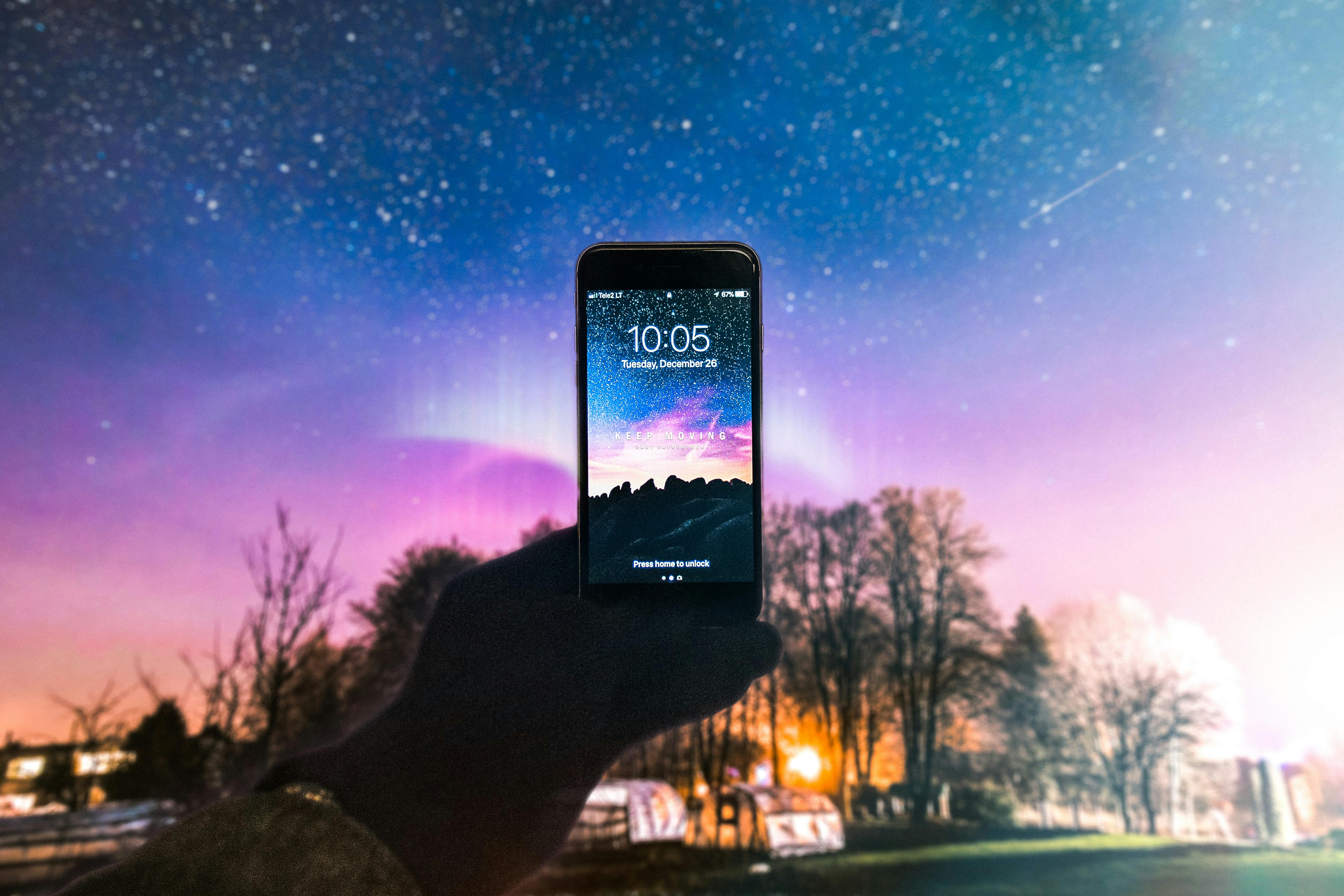If your iPhone is displaying a blue screen, it can be a troubling experience. Fortunately, there are some steps you can take to try and fix the problem. In this guide, we’ll cover how to troubleshoot and potentially resolve the issue with your iPhone’s blue screen.Unfortunately, it is not possible to fix a blue screen directly on an iPhone. If your iPhone is stuck on a blue screen, the best thing to do is to force restart your device by pressing and holding both the Home button and the Sleep/Wake button until the Apple logo appears. If this does not work, you may need to restore your device from iTunes.
Common Reasons for Blue Screen of Death on iPhones
The Blue Screen of Death (BSOD) is a common occurrence on many iPhones and can be a cause for concern. While there are a number of potential culprits behind the BSOD, some of the most common are hardware issues, software issues, and other miscellaneous problems. Let’s take a look at each of these in more detail:
Hardware Issues
Hardware issues are one of the most common causes of BSOD on iPhones. This can include problems with the phone’s processor, RAM, storage device, or any other component that makes up the device. If any one of these components is not working properly or is malfunctioning, it can cause the iPhone to display a blue screen. It’s important to note that hardware issues can often be difficult to diagnose and may require professional help.
Software Issues
Software issues can also be a cause for the BSOD on iPhones. For example, if an app or process is running in the background and causes an error it can result in a blue screen. Additionally, if there has been an update to iOS that has caused an incompatibility with certain apps or processes then this too could result in a BSOD. It’s important to make sure your iPhone is running on the latest version of iOS and that all apps are up to date.
Miscellaneous Problems
Lastly, there are also miscellaneous problems that can cause a blue screen on an iPhone. These could include things such as having too many apps open at once or having too much data stored on your device. Both of these can cause performance issues which could lead to the BSOD being displayed. It’s also important to make sure your phone isn’t overheating as this too could be causing it to display a blue screen.
In conclusion, there are several common reasons why your iPhone may display a blue screen. Hardware issues, software issues and miscellaneous problems can all contribute to the issue so it’s important to do some troubleshooting before seeking professional help if you experience this problem.
Force Restarting Your iPhone to Resolve Blue Screen Issue
Forcing your iPhone to restart can help resolve the blue screen issue. It is important to note that a force restart will not delete any of your data or settings. It is simply a procedure used to restart the device. To perform a force restart, press and hold the Home button and the Sleep/Wake button at the same time for at least 10 seconds, until you see the Apple logo appear on your screen. Once this has happened, your device should be restarted and working normally again.
If after performing a force restart, you still experience problems with your device’s display, it may be necessary to restore your phone from a backup or contact Apple Support for further assistance.

Updating iPhone Software and Apps to Fix Blue Screen
Having a blue screen on your iPhone can be very frustrating. It can often mean that you are unable to access any of your apps or data, which can be incredibly inconvenient. Fortunately, there are a few steps that you can take to try and resolve this issue. One of the best ways to fix a blue screen is to update the software and apps on your iPhone.
Updating the software on your device is a simple process and can usually be done in just a few steps. The first thing that you should do is open up the Settings app on your phone. From here, select the General tab and then look for the Software Update option. When prompted, select Download & Install to begin downloading and installing the latest version of iOS onto your device.
Once this process has been completed, you should find that any issues with the blue screen have been resolved. If not, then it may be necessary to update any apps that are currently installed on your device as well. To do this, open up the App Store app and look for an Updates tab at the bottom of the screen. Here, you will find a list of all apps that have pending updates available for download. Simply tap each one individually to start downloading them onto your phone.
Once all of these steps have been completed successfully, it should be possible to resolve any issues with the blue screen on your iPhone. Updating both software and apps regularly will help ensure that any potential problems are quickly identified and fixed before they become too serious or disruptive. If you still experience issues with a blue screen after trying these steps then it is recommended that you contact Apple Support for further assistance with resolving this problem.
Resetting Network Settings to Address iPhone Blue Screen Issues
It is not uncommon for iPhone users to experience a blue screen issue on their device. The blue screen can be caused by a variety of factors, including a software or hardware problem, or even an issue with the network settings. If the blue screen persists after attempting to restart the device, it may be necessary to reset the network settings. Doing so can help address the issue and allow users to get back to using their device without any further problems.
The first step in resetting network settings on an iPhone is to open the “Settings” app and tap “General” followed by “Reset” and then “Reset Network Settings”. This will delete all saved Wi-Fi networks from the device, as well as any stored passwords or VPN settings that have been previously configured. It is important to note that this action cannot be undone, so any saved networks will need to be manually re-entered after resetting the network settings.
Once the reset process has been completed, it is recommended that users restart their device and attempt to connect it to their home Wi-Fi network again. If there are still issues connecting, users may need to contact their internet service provider for assistance in resolving any potential connection issues that may be causing the blue screen problem.
In summary, resetting network settings can help address blue screen issues on an iPhone if they persist after restarting the device. While this action does delete all saved Wi-Fi networks from the device, users can easily re-enter them after completing the reset process. If there are still connection issues afterwards, then contacting an internet service provider may be necessary for further assistance in resolving any potential underlying connection problems that could be causing such issues with iPhones.
Checking Hardware and Battery Connections for iPhone Blue Screens
When an iPhone experiences a blue screen, it’s important to check the hardware and battery connections for any potential issues. Blue screens can be caused by a variety of issues, from faulty hardware to software bugs, and it’s important to rule out any possible hardware issues before attempting to resolve the underlying software problem. Here are some tips for checking the connections in an iPhone for blue screens.
First, check the physical connections between the battery, logic board, and other components. Look for any signs of corrosion or damage on the connectors, such as discoloration or bent pins. If there is any evidence of damage or corrosion, it’s important to replace the affected components.
Next, check the battery connections. Make sure that all of the connectors are securely attached and free from corrosion or damage. If there is any sign of corrosion or damage on the battery connector, it’s important to replace it as soon as possible.
Finally, check that all of the cables between components are securely connected and free from damage or debris. If any cables appear to be damaged or corroded, they should be replaced as soon as possible.
By following these tips and checking all of the hardware connections in an iPhone for blue screens, you can help ensure that your device is running smoothly and safely.

Conclusion
The blue screen of death can be an intimidating sight on an iPhone. However, the cause is usually not a serious issue and can be resolved by restarting the device or restoring from a recent backup. It’s important to regularly back up your data in case this happens again. If you have tried restarting and restoring without success, then you may need to contact Apple for additional support.
Overall, the blue screen of death is a common issue on iPhones but it can usually be solved with a few simple steps. By following these steps, you should be able to get your device running again in no time.
